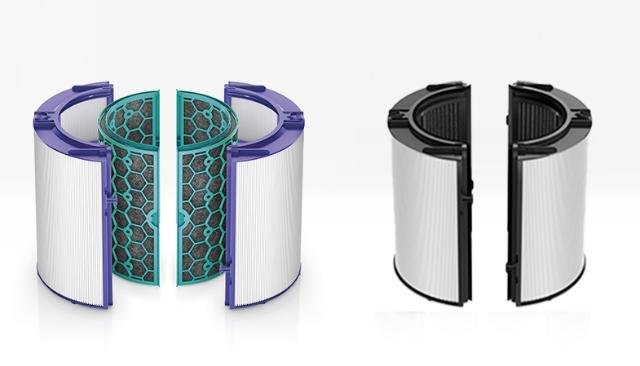How to Control Radiator Heat in Your Apartment
Controlling the heat in your apartment can be a challenge, especially if you have an old-fashioned radiator system. Radiators are powered by a boiler in the basement, which sends steam or hot water up into a radiator’s pipes. The hot pipes then radiate heat into your room, making it difficult to regulate the temperature. However, with a few simple tricks, you can keep your apartment comfortable all year round.
Understanding how your apartment’s radiator system works is the first step in controlling the heat. There are two main types of radiator systems: steam and hot water. Steam radiators are powered by a boiler that heats water until it becomes steam, which then travels through pipes and into the radiators. Hot water radiators work similarly, but the water is heated to a lower temperature and circulated through the system. Knowing which type of system you have can help you troubleshoot any issues and make necessary adjustments.
To control the heat in your apartment, there are several methods you can try. One of the simplest solutions is to adjust the radiator valve, which controls the flow of steam or hot water into the radiator. If your radiator doesn’t have a valve, you can try installing a thermostatic valve, which allows you to set the desired temperature. Another option is to use radiator covers, which can help prevent heat from radiating into your room. Additionally, you can try opening windows, using fans, and adjusting your thermostat to find the right balance of warmth and comfort.
Key Takeaways
- Understanding your apartment’s radiator system is essential for controlling the heat.
- Adjusting the radiator valve, installing a thermostatic valve, and using radiator covers are effective methods for regulating the temperature.
- Using additional tools such as fans, windows, and thermostats can help you find the optimal temperature for your living space.
Understanding Apartment Radiators
If you live in an apartment building with central heating, chances are you have a steam radiator in your unit. Radiator heating was most popular from the late 1800s to the 1930s and is still commonly used in older buildings today. Understanding how your radiator works can help you control the heat in your apartment and keep you comfortable during the colder months.

Types of Radiators
There are two main types of radiators in a steam radiator system: one-pipe and two-pipe. In a one-pipe system, the same pipe is used to supply steam to the radiator and to return condensed water back to the boiler. A two-pipe system, on the other hand, has a separate supply pipe and return pipe for each radiator.
How Radiators Work
Radiators are powered by a boiler in the basement, which sends steam up into a radiator’s pipes. The hot pipes then radiate heat into your room. One of the simplest solutions to prevent that heat from radiating is by covering the hardware with a cabinet. Radiators have a valve that controls the amount of steam that enters the radiator. The more steam that enters, the hotter the radiator gets and the more heat it emits.
Controlling Radiator Heat
Controlling the heat from your radiator can be done in a few ways. One option is to install a thermostatic radiator valve (TRV) on your radiator. A TRV can be set to a specific temperature, and it will automatically adjust the flow of steam to maintain that temperature. In a one-pipe system, a TRV controls the amount of air inside your radiator. The more air you let in, the less space is available for steam, causing your radiator to generate less heat.
Another option is to use a valve called a high-capacity thermostatic radiator actuator, which precisely controls how hot your radiator gets by modulating the flow of steam. This valve should be installed by your super or a plumber.
Conclusion
Understanding how your apartment radiator works is key to controlling the heat in your unit. By installing a TRV or a high-capacity thermostatic radiator actuator, you can keep your apartment at a comfortable temperature without wasting energy.
Types of Radiator Systems
When it comes to controlling the heat in your apartment, it’s important to understand the type of radiator system you have. There are two main types of radiator systems: one-pipe and two-pipe systems.
One-Pipe System
A one-pipe system is the simplest type of radiator system. In this system, there is only one pipe connected to each radiator. The same pipe is used to supply steam to the radiator and to return the condensed water back to the boiler.
One-pipe systems are typically found in older buildings and can be more difficult to control than two-pipe systems. However, there are devices that can be installed on radiators to control the amount of heat released. A thermostatic radiator valve (TRV) can be used to control the amount of air that enters the radiator, which in turn controls the amount of heat released.
Two-Pipe System
A two-pipe system is a more advanced type of radiator system. In this system, there are two pipes connected to each radiator. One pipe is used to supply steam to the radiator, while the other pipe is used to return the condensed water back to the boiler.
Two-pipe systems are typically found in newer buildings and are generally easier to control than one-pipe systems. They allow for more precise temperature control and can be equipped with thermostats to regulate the heat output.
No matter what type of radiator system you have, it’s important to keep the radiators clean and free of obstructions. Dust and debris can accumulate on the radiator fins, which can reduce the efficiency of the system. Additionally, make sure that the radiator valves are working properly and that there are no leaks in the system.
Understanding the type of radiator system in your apartment can help you better control the heat and keep your living space comfortable.
How Radiators Work
When it comes to heating your apartment, radiators are a popular choice. Radiators typically use steam or hot water to produce heat, which is then transferred to the surrounding air. Here’s how it works:
Steam Radiators
Steam radiators are powered by a boiler located in a different area than the radiator, typically in a basement or utility room. The boiler heats water, which then turns into steam. The steam travels through pipes and enters the radiator. As the steam enters the radiator, it condenses back into water, releasing heat in the process. The heat warms the surrounding air, and the cycle repeats.
Hot Water Radiators
Hot water radiators work in a similar way to steam radiators, but instead of using steam, they use hot water. The boiler heats the water, which then travels through pipes and enters the radiator. The hot water releases heat, warming the surrounding air.
Piping
The pipes that connect the boiler to the radiator and back are crucial to the system’s functionality. The pipes must be properly insulated to prevent heat loss and ensure maximum efficiency. Piping that is too small can cause the system to overwork, while piping that is too large can lead to inefficient heating.
Convection
Radiators work by convection, which is the transfer of heat through the movement of fluids. As the hot water or steam enters the radiator, it heats the metal, which then heats the surrounding air. The heated air rises, creating a convection current that circulates the heat throughout the room.
Boiler
The boiler is the heart of the heating system, providing the heat that is transferred to the radiator. Proper maintenance of the boiler is crucial to ensure efficient operation. Regular maintenance, such as cleaning and inspection, can help prevent breakdowns and extend the life of the boiler.
Overall, understanding how radiators work is crucial to controlling the heat in your apartment. By properly maintaining the system and ensuring that it is functioning efficiently, you can keep your apartment comfortable and save on energy costs.
Heat Control Methods
Controlling the heat in your apartment can be a challenge, especially during the winter months. Fortunately, there are several methods you can use to regulate the temperature of your radiator and keep your living space comfortable. Here are some effective heat control methods to consider:
Using Thermostatic Radiator Valve
One of the most effective ways to control the heat in your apartment is to install a thermostatic radiator valve (TRV). A TRV is a device that regulates the temperature of your radiator by modulating the flow of steam. It senses the temperature in the room and adjusts the steam flow accordingly, ensuring that your radiator doesn’t overheat. If your apartment has a two-pipe system, you’ll need a high-capacity TRV, which can be installed by your super or a plumber.
Utilizing Radiator Covers
Radiator covers are another effective way to control the heat in your apartment. You can purchase a cover or make one yourself using fabric or wood. A cover will help to contain the heat and prevent it from escaping into the room. If you opt for a synthetic fabric, like polyester, make sure it’s heat-resistant and won’t catch on fire. A cover can also help to improve the aesthetics of your radiator and add a decorative touch to your living space.
Maximizing Window Insulation
Another way to control the heat in your apartment is to maximize window insulation. Windows are a major source of heat loss, so it’s important to insulate them properly. You can use weatherstripping, caulking, or draft stoppers to seal any gaps and prevent cold air from entering your apartment. You can also use window film or shades to help retain heat and keep your living space warm.
Using Fans
If your apartment gets too hot, you can use fans to help circulate the air and regulate the temperature. A ceiling fan can help to distribute heat evenly throughout the room, while a portable fan can be used to direct air flow where it’s needed most. You can also use a fan to blow cool air from outside into your apartment, which can help to lower the temperature and keep you comfortable.
By utilizing these heat control methods, you can keep your apartment at a comfortable temperature throughout the winter months. Whether you choose to install a TRV, use a radiator cover, maximize window insulation, or use fans, there are plenty of effective ways to regulate the heat in your living space.
Maintenance and Troubleshooting
If you’re experiencing issues with your radiator heat, it’s important to perform regular maintenance and troubleshooting to keep your apartment comfortable. Here are some tips to help you address common radiator problems.
Dealing with Leaks
If you notice water dripping from your radiator, it’s likely there’s a leak. You should immediately turn off your heating system and contact a professional to fix the issue. Ignoring a leak can lead to further damage and costly repairs. In the meantime, you can place a bucket or towel under the leak to catch any water.
Addressing Overheating
If your apartment is too hot, it’s possible that your radiator is overheating. One solution is to install a cover on your radiator to prevent heat from radiating into your room. You can also try adjusting the valves on your radiator to reduce the amount of steam that enters the radiator. If these solutions don’t work, you may need to contact a professional to inspect and adjust your heating system.
Handling Noisy Radiators
Noisy radiators can be a nuisance, but they can also indicate a more serious problem. If you hear banging or clanking sounds coming from your radiator, it’s possible that there’s air trapped in the system. You can try bleeding the radiator to release the air. If the noise persists, you may need to contact a professional to inspect and repair your heating system.
Regular maintenance and troubleshooting can help you keep your radiator heat under control. By addressing issues early on, you can prevent costly repairs and ensure that your apartment remains comfortable throughout the year.
Improving Radiator Aesthetics
If you’re tired of looking at your unsightly radiator, there are a few ways to improve its appearance. Here are some options for making your radiator blend in with your apartment decor.
Painting Radiators
One way to update your radiator’s look is by painting it. If you have a metal radiator, you can strip off the old paint using chemical stripping or sandblasting. Once the radiator is stripped, you can paint it with a metal paint that can withstand high temperatures. If you have a wood radiator cover, you can paint it with regular paint.
Before you begin painting, make sure your radiator is clean and free of dust and debris. You can use a degreaser or a mixture of water and vinegar to clean the surface. Once the surface is clean, you can apply a coat of primer before painting. This will help the paint adhere better and last longer.
Using Radiator Covers
Another way to improve the look of your radiator is by using a radiator cover. Radiator covers come in all shapes and sizes, and can be made of wood, metal, or other materials. They can be custom-made to fit your radiator, or you can purchase a pre-made cover that fits your radiator’s dimensions.
Radiator covers not only improve the appearance of your radiator, but they can also help to distribute heat more evenly throughout the room. They work by trapping the heat inside the cover and directing it out through a grill or vent. This can help to prevent hot spots in your room and make your space more comfortable.
When choosing a radiator cover, make sure it is made of a material that can withstand high temperatures. You should also make sure that the cover allows for proper airflow to ensure that your radiator is working efficiently.
In conclusion, there are several ways to improve the look of your radiator. Whether you choose to paint your radiator or use a cover, you can make your radiator blend in with your apartment decor and improve the overall look of your space.
Living Comfortably with Radiators
If you live in an apartment with radiators, you may have experienced the discomfort of overheating during the winter months. However, with a few tips and tricks, you can control the heat and live comfortably with your radiators.
One way to control the heat is by adjusting the valves on your radiators. These valves control the amount of steam that enters the radiator and therefore the amount of heat that is produced. If you feel too warm, try turning the valve down to reduce the flow of steam. If you feel too cold, turn the valve up to increase the flow of steam.
Another way to control the heat is by using a cover for your radiators. Covers prevent heat from radiating into the room and can also add a decorative touch to your space. If you don’t want to purchase a cover, you can also use a wool blanket or other heavy fabric to cover your radiator and prevent heat from escaping.
In addition to controlling the heat, it’s important to keep your skin hydrated during the winter months. Radiators can cause dry air, which can lead to dry skin. To combat this, use a humidifier in your apartment to add moisture to the air.
Finally, make your space cozy by adding soft blankets, plush pillows, and warm lighting. This will not only make your space more comfortable but also create a welcoming atmosphere during the colder months.
By following these tips, you can live comfortably with your radiators and enjoy the winter season in your apartment.
Legal and Building Considerations
When it comes to controlling radiator heat in your apartment, there are several legal and building considerations you need to keep in mind. These considerations may vary depending on factors such as your location, the type of building you live in, and the specific rules and regulations of your landlord or co-op board.
Heat Requirements
First and foremost, it’s important to understand the heat requirements for your apartment. In New York City, for example, landlords are required to provide heat from October 1st through May 31st. According to ApartmentGuide, if the outside temperature is 55 degrees or below between 6:00 AM and 10:00 PM, it must be at least 68 degrees in the apartment building, and between 10:00 PM and 6:00 AM, the inside temperature must be 62 degrees.
Building Considerations
If you live in an apartment building, there may be additional considerations when it comes to controlling your radiator heat. For example, some buildings may have a central heating system that is controlled by the building management. In this case, you may not have direct control over the temperature in your apartment.
Co-op Owners and Board Approval
If you own a co-op apartment, you may need to get approval from your co-op board before making any changes to your radiator or heating system. This is because co-op boards are responsible for maintaining the building’s infrastructure and ensuring that any modifications are safe and up to code.
Landlord Regulations
Finally, it’s important to be aware of any regulations or rules set by your landlord when it comes to controlling radiator heat. While landlords are required to provide reasonable heat, they may not be required to give tenants control over the thermostat. According to Rocket Lawyer, landlords can control the thermostat for their rental properties in most states.
In summary, understanding the legal and building considerations when it comes to controlling radiator heat in your apartment is crucial. Make sure you are aware of the heat requirements for your location, any building-specific considerations, and any rules set by your landlord or co-op board.




